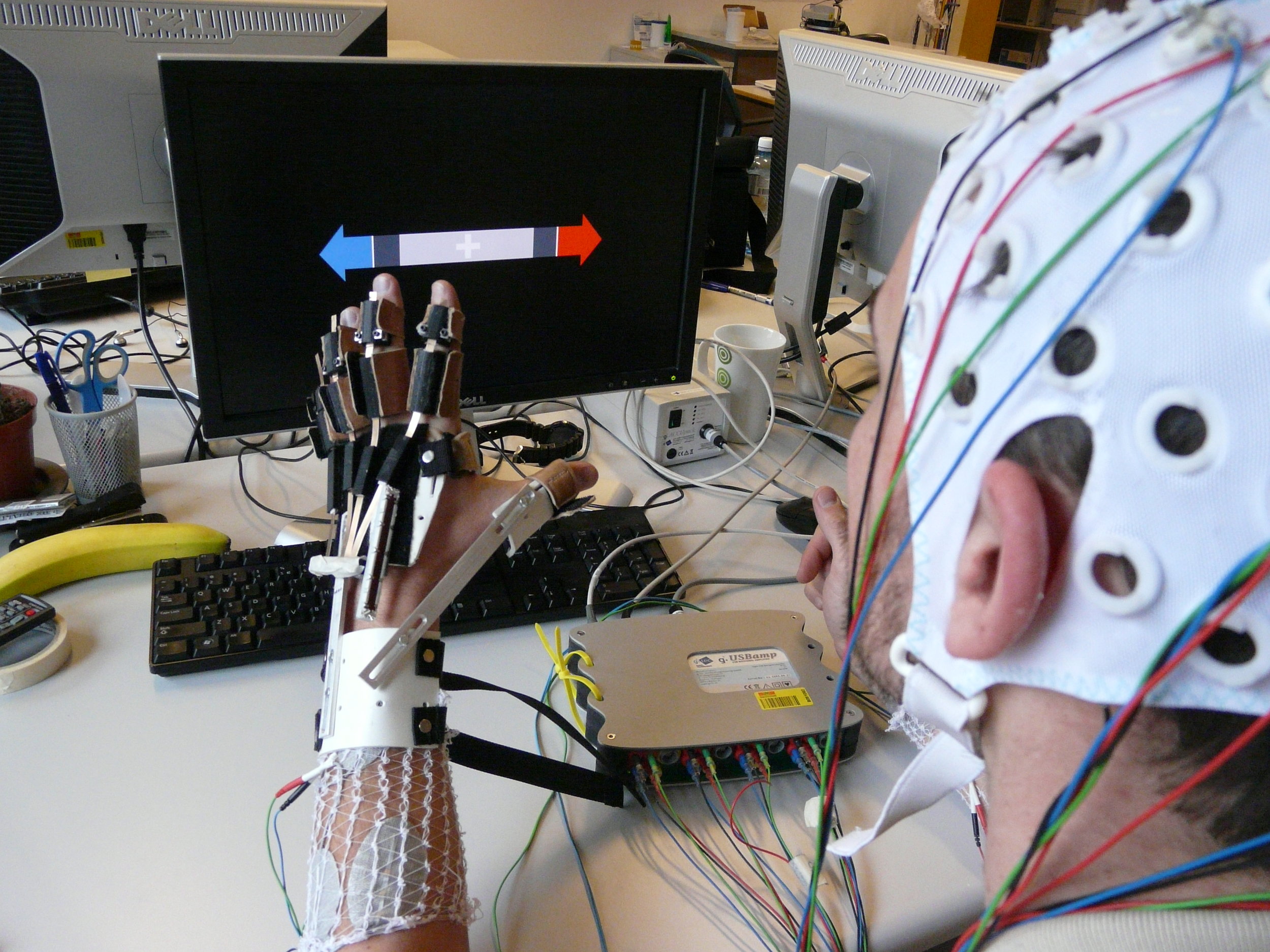The development of brain-computer interface (BCI) technologies have been a hot topic for researchers recently due to the many fascinating applications that the technologies can be built to solve. Some designs are built merely for show, while others are designed enable the disabled population to perform tasks that they would never be able to attempt. Let’s look closer at a formal definition of BCI and the real-world applications that these units are currently being built to supplement.
Defining Brain-Computer Interfaces (BCI)
Brain-computer interfaces (BCIs) essentially create a direct communication pathway between a brain and an external device. This innovative technology relies on the real-time detection of specific neural patterns to bypass the brain’s normal output channels. BCI solutions are broken down into either non-invasive or invasive devices. Non-invasive BCI devices record brain wave information via sensors placed on or very close to the head. Invasive BCI devices typically require complex surgery to implant electrodes in the highly sensitive grey matter of the patient’s brain. Although this method produces the best results due to the high-quality signal of the invasive device, there is an increased risk of infection and development of scar-tissue buildup over time if the device housing is not maintained.
BCI Applications
BCI devices allow for a seamless connection between device and user that assists them in carrying out essential life tasks. For nonverbal and/or non-ambulatory individuals, these devices can provide them with the treatment they need to improve their quality of life. Other BCI devices are being built more for human enhancement rather than assistance, but this could change if enough patients and practitioners adopt that specific device. Let’s take a closer look at two types of BCI devices that have vastly different applications, but can still serve the same function of enabling the disabled community in the future.
Robot Operating System (ROS)
A Robot Operating System (ROS) is one type of BCI device that allows a patient to operate a robot using only their thoughts (brain signals). This device has incredible applications to improve the quality of life for individuals with severe physical disabilities that cause them to become non-ambulatory. ROS applications are built with artificial intelligence (AI), thus they can be programmed from the beginning and learn the user’s specific needs to become more in tune with the individual over time. Tasks such as feeding themselves and conversing with others can be accomplished via ROS integration.
Video Games
You normally wouldn’t think that video games have any assistive qualities, but when they are built on the platform of BCI technology, it can become a solution to simulate Event-Related Potentials (ERPs). These solutions can be a great learning tool for those who are new to their BCI technology to practice daily tasks in a safe environment. Although most BCI video games are being built for healthy individuals to enjoy, their user experience (UX) might be the perfect platform that other BCI solutions mimic to provide more widespread adoption over time.
Closing Thoughts
The World Health Organization (WHO) estimates that over 1 billion individuals are currently living with some form of disability around the world. If BCI technologies can be integrated to the lives of these individuals, it can effectively increase their quality of life and happiness in due time. The development of BCI devices that are built on the backbone of ROS and video game solutions might not be the perfect platform for the perfect BCI device, but they serve their purpose now and as a springboard to future BCI device development in the future.
If you have access to an iPhone or Apple Tablet, you and your child can begin learning social communication behaviors instantly via the Speakprose app! Doesn’t that sound exciting?


